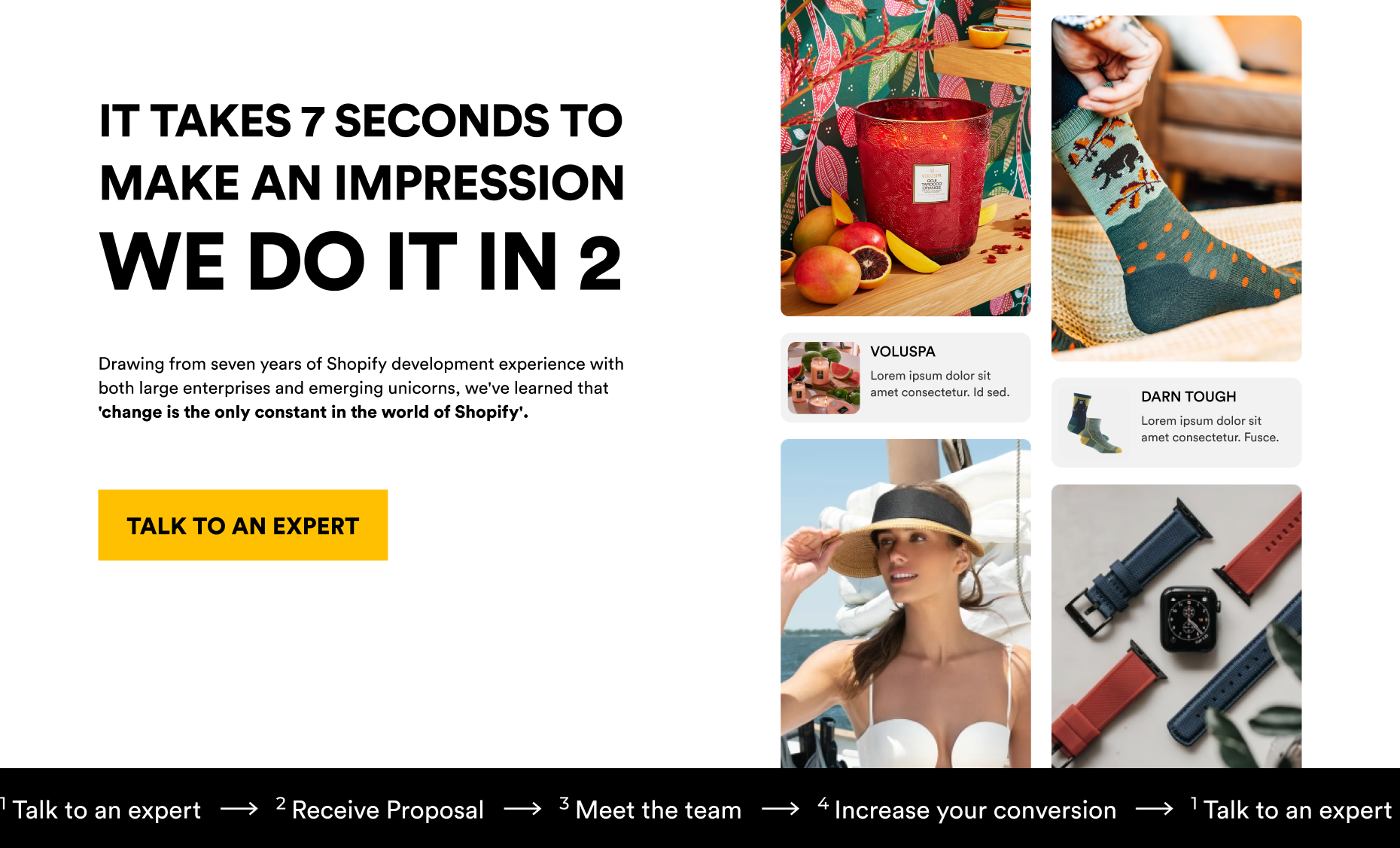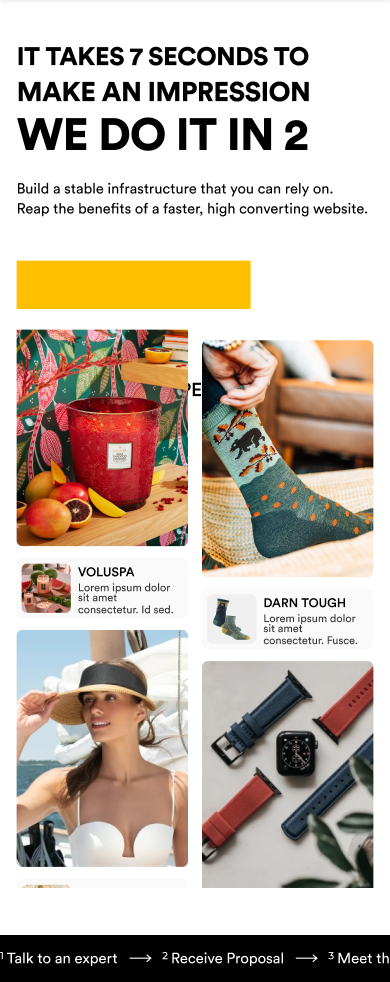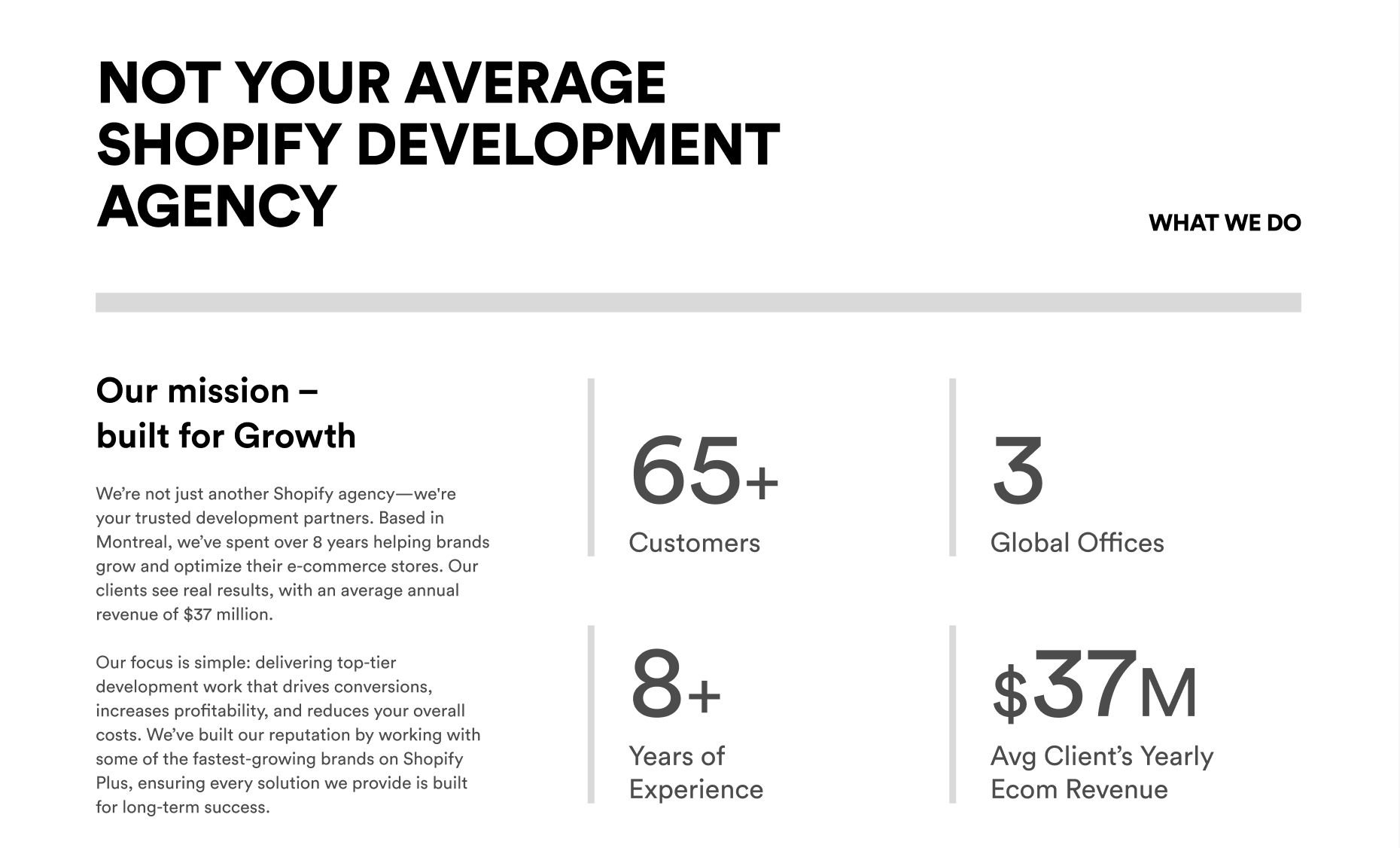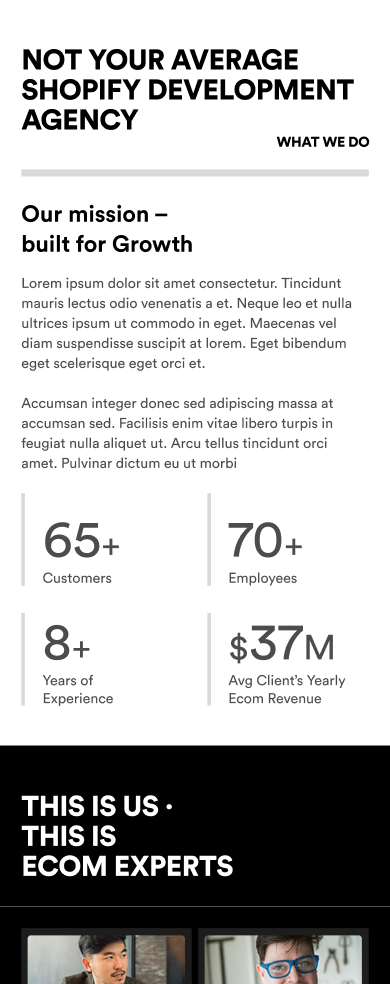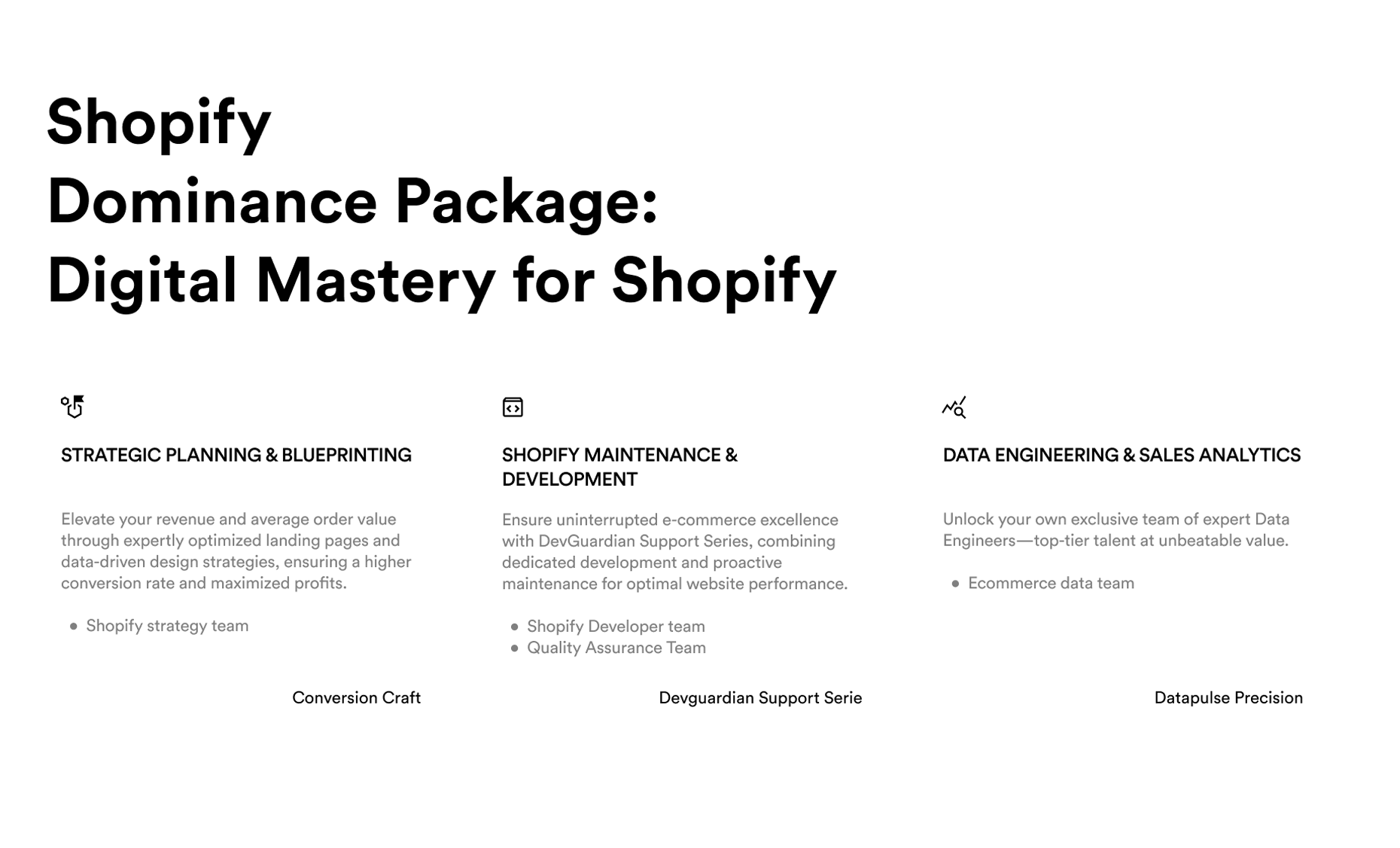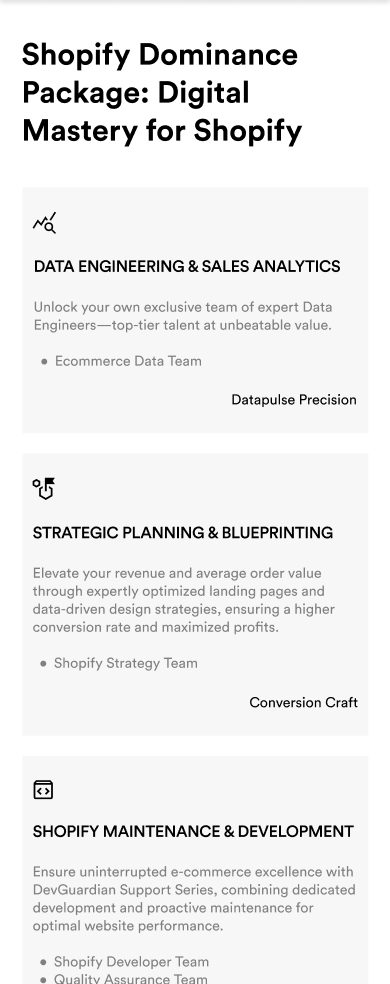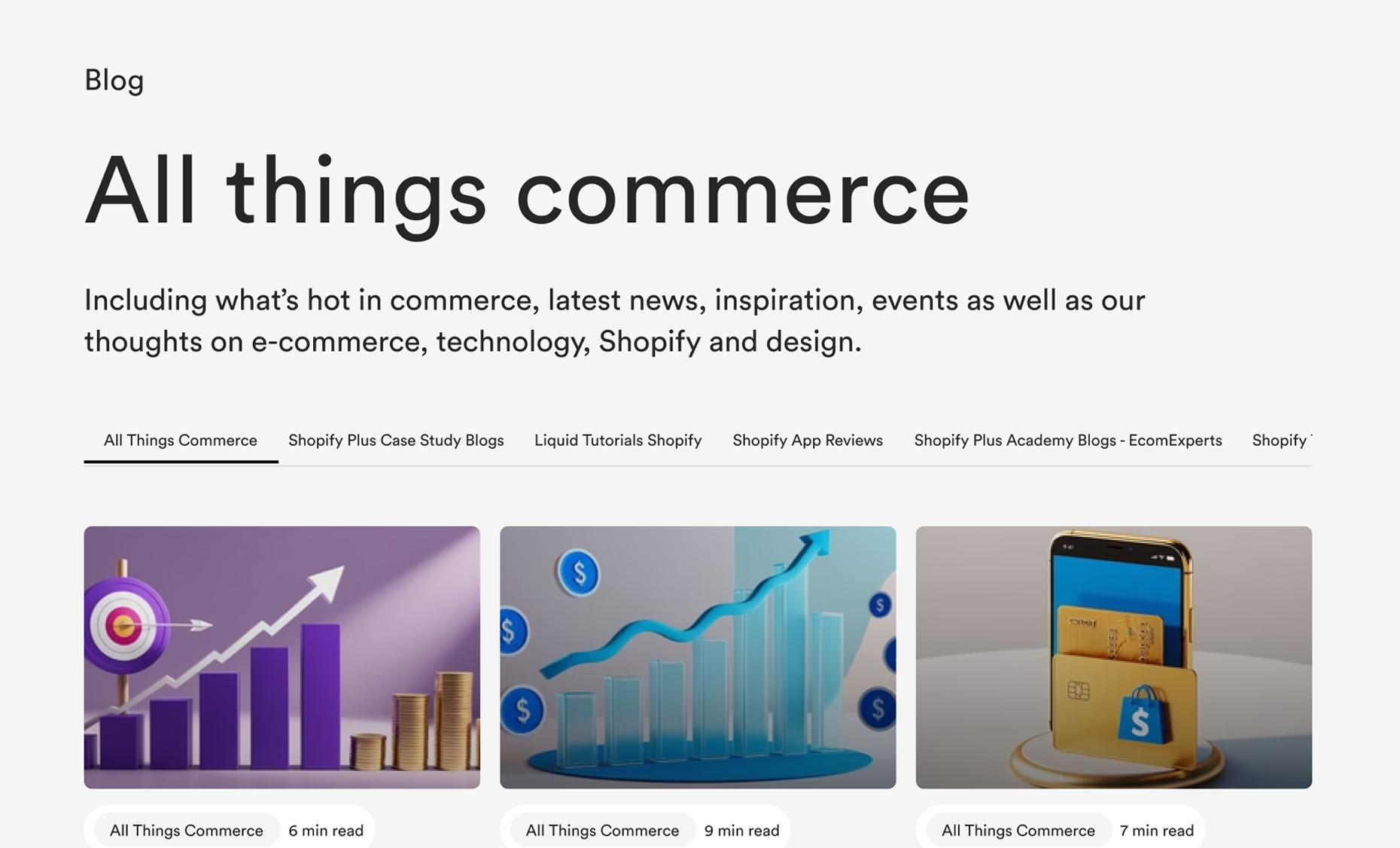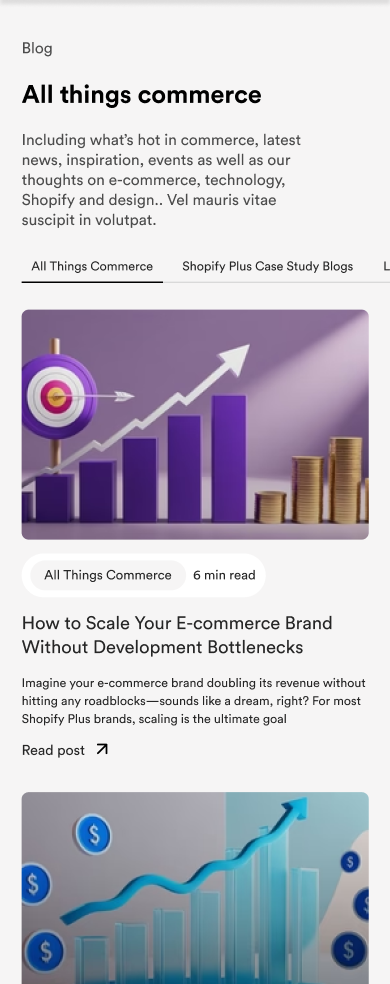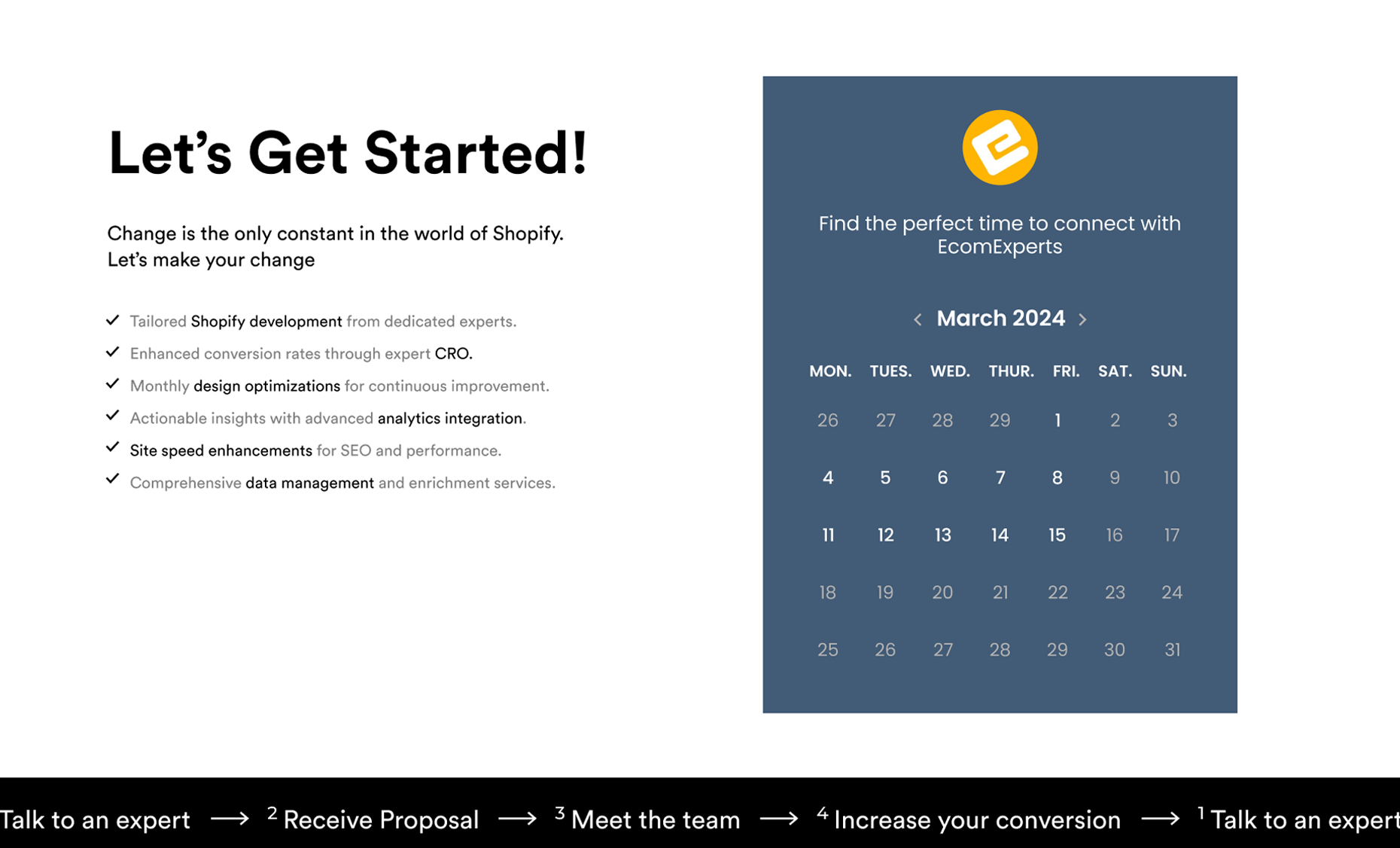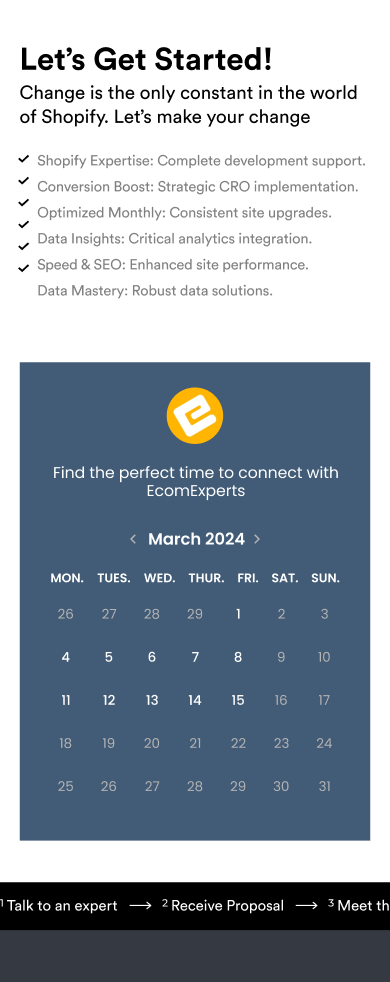Every e-commerce store owner has one thing on their mind: revenue growth.
You’re already running ads, driving traffic, and working on improving conversions, but the truth is, that most businesses stop there. They forget that the secret to scaling isn’t always about bringing in more customers—it’s about maximizing the value of the ones you already have.
That’s where the AARRR framework comes into play. Known as the "Pirate Metrics Framework" (yeah, it’s quirky, but it sticks), AARRR breaks the customer journey into five key stages: Acquisition, Activation, Retention, Referral, and Revenue.
Here’s the thing: boosting revenue isn’t about throwing a bunch of discounts around or hoping customers spend more on their own. It’s about being intentional—using data-driven strategies like upselling, cross-selling, and personalized pricing to create an experience that not only drives higher sales but keeps your customers coming back for more.
What is the AARRR Framework?

Alright, let’s demystify this "Pirate Metrics" thing before we dive deeper. The AARRR framework—yes, the name is catchy—is a simple but genius way to track and optimize your customer journey.
It breaks everything down into five stages: Acquisition, Activation, Retention, Referral, and Revenue. Think of it as the blueprint for how people find you, engage with you, stick around, and ultimately spend their hard-earned cash in your store.
Here’s the breakdown:
- Acquisition: How do customers find you? Think ads, organic traffic, social media, SEO—all the ways people land on your site.
- Activation: Are visitors taking that first step, like signing up for your email list or adding something to their cart?
- Retention: Do they come back? This is all about keeping your customers engaged after their first interaction.
- Referral: Are your happy customers telling their friends about you? Referral programs and word-of-mouth live here.
- Revenue: The holy grail—how much they’re spending and how often.
While each stage is important, today we’re zooming in on the one that brings in the dollars: Revenue.
Why focus on Revenue? Simple. You’ve already spent money to get people to your site (Acquisition), and they’ve taken the first steps (Activation). Now, the goal is to maximize what they spend during and after that visit.
And here’s the kicker: this isn’t just about getting them to buy once—it’s about boosting their total spend through smarter strategies like upselling, cross-selling, personalized pricing, and subscriptions.
Think of brands like Amazon—every time you shop, they’re suggesting things like “frequently bought together” or nudging you toward a better version of what’s already in your cart. It’s no accident their revenue per customer is sky-high. They’ve mastered the art of the Revenue stage.
The Revenue Stage of the AARRR Framework
The revenue stage is where all the work you’ve done to acquire and activate customers finally pays off—literally. It’s the point in the customer journey where they pull out their wallet, and more importantly, where you can nudge them to spend just a little (or a lot) more.
But here’s the thing: the Revenue stage isn’t just about getting that first sale. It’s about maximizing the potential of every transaction and building a sustainable flow of income over time. Think beyond “How can I get them to buy” and ask, “How can I increase the value of every purchase and keep them coming back?”
What Makes the Revenue Stage Crucial for E-commerce?
-
You’ve Already Paid for Traffic:
By the time a customer gets to the point of purchase, you’ve likely spent money on ads, SEO, or other marketing channels to bring them in. Maximizing their spending at this stage improves your return on investment (ROI) and offsets acquisition costs. -
It’s the Easiest Way to Grow Revenue:
Bringing in new customers is expensive—it can cost 5–7 times more than selling to an existing one. By focusing on upselling, cross-selling, and repeat purchases, you can grow revenue without pouring more into acquisition. -
It Strengthens Your Business’s Bottom Line:
Higher revenue per customer means better cash flow, more room for reinvestment, and the ability to scale faster. It’s the difference between an e-commerce business surviving versus thriving.
The Revenue Stage is More Than Just Sales
Let’s use Apple as a real-world example. They don’t just sell you an iPhone—they sell you AirPods, AppleCare, and that sleek leather case you didn’t know you needed. And when the next iPhone drops? You’re back in line because you’re locked into their ecosystem. That’s not just great branding; it’s a masterclass in maximizing revenue at every stage.
Here’s how to think about it for your store:
- The first purchase is just the start.
- Use strategies like personalized pricing, cross-sells, upsells, and subscriptions to ensure that every customer’s lifetime value (CLV) goes up.
We’re not just talking theory here—there are actionable steps you can take right now to make the Revenue stage work for you. And that’s exactly what we’ll explore next: the specific strategies you can use to drive more revenue from every transaction.
Strategies to Maximize Revenue in E-commerce
When it comes to driving revenue, there’s no one-size-fits-all approach. The key is to leverage proven tactics that fit seamlessly into your customer journey, making it easy for shoppers to spend more without feeling pressured. Below are the most effective strategies to crush it in the Revenue stage.
1. Upselling and Cross-Selling
These aren’t buzzwords—they’re revenue boosters used by e-commerce giants like Amazon and Best Buy for a reason.
- Upselling: This involves encouraging customers to purchase a higher-tier product or a version with additional features. For example, if someone is buying a basic laptop, you can upsell to a model with a faster processor or more storage.
- Cross-Selling: This is about suggesting complementary products that enhance the customer’s main purchase. Think phone cases for smartphones or gym accessories for fitness equipment.
Why They Work:
Customers love convenience. When you present options that genuinely add value to their purchase, they’re more likely to buy.
How to Implement:
- Use product pages to showcase premium alternatives (upselling).
- Highlight related items during checkout (cross-selling).
- Leverage tools like Shopify apps or AI-based recommendation engines to automate suggestions.
Example:
 Apple’s product pages are an upselling masterclass. When you buy an iPhone, the page subtly nudges you toward models with more storage, better cameras, and higher price points. During checkout, they cross-sell accessories like chargers, cases, and AppleCare.
Apple’s product pages are an upselling masterclass. When you buy an iPhone, the page subtly nudges you toward models with more storage, better cameras, and higher price points. During checkout, they cross-sell accessories like chargers, cases, and AppleCare.2. Bundle and Tiered Pricing Offers
Bundles are a psychological hack that makes customers feel like they’re getting more for less.
- Bundling: Combine products into a discounted package. For instance, a skincare brand might offer a cleanser, toner, and moisturizer set at 20% off compared to buying each item separately.
- Tiered Pricing: Incentivize higher spending by offering escalating discounts. For example, “Spend $50 and get 10% off, spend $100 and get 20% off.”
Why They Work:
Bundles simplify decision-making while tiered pricing encourages customers to increase their cart value to reach the next discount level.
How to Implement:
- Use cart thresholds for discounts.
- Create curated bundles that solve specific customer needs (e.g., a “Starter Kit” or “Holiday Gift Set”).
Example:
Sephora is a pro at bundling. Their gift sets not only attract impulse buyers but also introduce customers to new products, increasing the likelihood of repeat purchases.
3. Personalized Pricing and Discounts
One-size-fits-all discounts are out. Personalized pricing is the future.
How It Works:
- Offer discounts based on customer behavior. For example, first-time buyers get 10% off, while loyal customers unlock exclusive offers.
- Use dynamic pricing to adjust offers based on demand, inventory, or browsing history.
Why They Work:
Personalized pricing makes customers feel valued while increasing conversions.
Example:

4. Streamline the Checkout Experience
Checkout is your final shot at maximizing revenue. If it’s clunky or overwhelming, you’re losing sales.
What to Do:
- Simplify checkout steps—fewer clicks, fewer fields.
- Add low-friction upsells like gift wrapping, extended warranties, or faster shipping options.
Example in Action:
Shopify stores often use apps like Bold Upsell to suggest easy add-ons during checkout, ensuring customers can enhance their purchases without leaving the page.
5. Subscription Models for Recurring Revenue
Subscription models are one of the most effective ways to drive recurring revenue.
How It Works:
- Offer subscription options for consumables like coffee, skincare products, or meal kits.
- Incentivize subscriptions with discounts or exclusive perks (e.g., free shipping for subscribers).
Why They Work:
Subscriptions provide predictable revenue while building customer loyalty.
Example:

Dollar Shave Club revolutionized the grooming industry by offering razor subscriptions. Their model locked customers into recurring purchases, reducing churn and maximizing lifetime value.
6. Retargeting for Abandoned Carts
Not every shopper buys on their first visit, but that doesn’t mean they’re a lost cause.
How It Works:
- Use retargeting ads or abandoned cart emails to nudge customers back to complete their purchases.
- Sweeten the deal with a small discount or free shipping offer.
Example:
ASOS excels at abandoned cart recovery. Their follow-up emails remind customers of what they left behind and often include a discount code to seal the deal.
These strategies aren’t just about boosting sales—they’re about creating an experience where customers feel understood, valued, and eager to spend more. Start with one or two tactics, track your results, and scale up from there.
Measuring Revenue Metrics to Track Success
You’ve implemented your revenue-boosting strategies—awesome! But how do you know if they’re working? Success in the Revenue stage isn’t about guesswork; it’s about tracking the right metrics to ensure your efforts are moving the needle. Here’s how to measure your progress effectively.
1. Average Order Value (AOV)
Why It Matters:
AOV is the cornerstone metric for the Revenue stage. It tells you how much your customers are spending per transaction and is the first indicator of whether strategies like upselling, cross-selling and bundling are paying off.
Formula:
AOV = Total Revenue ÷ Number of Orders
Example:
If your store made $50,000 from 1,000 orders in December 2024, your AOV is $50. If your AOV was $45 last month, congrats—you’re growing!
How to Improve AOV:
- Add upsell and cross-sell offers at strategic points in the customer journey.
- Introduce tiered pricing incentives like “Spend $100, Save 10%.”
2. Conversion Rate
Why It Matters:
Your conversion rate reflects how effectively you’re turning visitors into paying customers. If your Revenue strategies are working, you’ll likely see this number climb.
Formula:
Conversion Rate = (Number of Sales ÷ Total Visitors) x 100
Example:
If 10,000 people visited your store last month and 500 made a purchase, your conversion rate is 5%.
How to Monitor:
Use tools like Google Analytics or Shopify’s built-in reporting to track this metric. Look for spikes or dips after introducing new revenue tactics.
3. Attach Rate
What It Is:
The percentage of transactions where customers purchase additional items (via cross-selling or bundling). This metric shows how well your product recommendations are performing.
Example:
If 300 out of 1,000 orders in December 2024 included at least one cross-sell product, your attach rate is 30%.
How to Improve It:
- Make your cross-sell suggestions more relevant using AI-powered tools like ReConvert or Bold Upsell.
- Test different placements (e.g., product pages, cart pages, or pop-ups).
4. Customer Lifetime Value (CLV)
Why It Matters:
CLV measures the total revenue a customer generates over their lifetime. A higher CLV means your Revenue strategies are not just driving short-term gains but creating long-term growth.
Formula:
CLV = (Average Purchase Value) x (Average Number of Purchases) x (Customer Lifespan)
Example:
If your customers spend $50 per order, make four purchases annually, and remain loyal for three years, their CLV is $600.
How to Boost CLV:
- Implement subscription models to secure recurring revenue.
- Build loyalty programs that reward repeat purchases.
5. Revenue Per Visitor (RPV)
What It Measures:
RPV helps you understand how much revenue you’re generating from each visitor, combining the effectiveness of both traffic and conversion strategies.
Formula:
RPV = Total Revenue ÷ Total Visitors
Example:
If your December 2024 revenue was $50,000 and your site had 20,000 visitors, your RPV is $2.50.
How to Use It:
- Compare RPV across different traffic sources to identify high-value channels.
- Use this data to refine your acquisition strategies alongside your Revenue tactics.
6. Retargeting ROI
Why It Matters:
If you’re running retargeting ads or abandoned cart email campaigns, track how much revenue these efforts generate compared to their cost.
Example:
If you spend $500 on a retargeting campaign and it brings in $2,500 in sales, your ROI is 400%.
How to Maximize ROI:
- Test different creative formats and messaging.
- Segment audiences to make offers more personalized (e.g., higher-value discounts for abandoned carts over $100).
Tools to Help You Measure Success
- Google Analytics: Track AOV, conversion rates, and traffic sources.
- Shopify Analytics: Monitor key e-commerce metrics like attach rate, CLV, and sales trends.
- Third-Party Tools: Use apps like Klaviyo (email metrics), ReConvert (upsell metrics), or Google Ads (campaign performance).
Metrics are your guideposts—they show you what’s working, what’s not, and where to double down. By consistently monitoring these numbers, you can refine your strategies, improve your Average Order Value (AOV), and ensure your Revenue stage is as optimized as possible.
Avoiding Common Mistakes in the Revenue Stage
While the Revenue stage is packed with opportunities, it’s easy to stumble into common pitfalls that can derail your progress. The good news? Most of these mistakes are avoidable with a strategic approach. Here’s what to watch out for—and how to sidestep them.
1. Overloading Customers with Offers
The Problem:
You’ve got upsells, cross-sells, discounts, and bundles galore—but cramming too many offers onto a single page overwhelms your customers. Instead of adding to their cart, they abandon it.
The Solution:
- Keep your recommendations minimal and relevant. For example, show only 2–3 high-quality cross-sell options instead of a long list.
- Segment your offers by purchase stage. Use product pages for upsells and the cart page for cross-sells.
2. Ignoring Mobile Optimization
The Problem:
More than half of e-commerce traffic comes from mobile devices, but many stores fail to optimize their Revenue strategies for smaller screens. Cross-sell suggestions look cluttered, and the checkout process becomes a nightmare.
The Solution:
- Use the mobile-responsive design for all upsell and cross-sell placements.
- Streamline the mobile checkout process to ensure a seamless experience.
3. Using Generic or Irrelevant Recommendations
The Problem:
Recommending unrelated products erodes trust. If someone’s buying a formal suit, suggesting a random pair of sneakers won’t just fail—it might make them question your store’s credibility.
The Solution:
- Use data-driven algorithms to personalize recommendations.
- Base suggestions on customer behavior, browsing history, and cart content.
4. Neglecting Retargeting and Follow-Ups
The Problem:
You lose potential revenue by failing to re-engage customers who abandoned their carts or browsed products without purchasing.
The Solution:
- Set up abandoned cart email sequences with enticing incentives (e.g., discounts or free shipping).
- Use retargeting ads to remind customers of products they viewed.
5. Focusing Only on First-Time Purchases
The Problem:
It’s easy to chase new customers while neglecting your existing ones. This approach increases acquisition costs and leaves money on the table.
The Solution:
- Build loyalty programs that reward repeat purchases.
- Offer exclusive discounts for returning customers to boost retention.
6. Setting Discounts Too Low or Too High
The Problem:
Offering discounts that are too small doesn’t drive conversions, while discounts that are too generous cut into profit margins.
The Solution:
- Test different discount levels to find the sweet spot.
- Use tiered discounts like “Spend $50 and save 10%, Spend $100 and save 20%” to encourage larger purchases.
The Revenue stage is where strategy meets execution. By avoiding these common pitfalls and focusing on personalization, seamless design, and strategic follow-ups, you’ll not only boost your Average Order Value (AOV) but also build a stronger connection with your customers.
Driving E-commerce Growth with the AARRR Framework
The Revenue stage of the AARRR framework is more than just a metric—it’s where strategy turns into tangible growth for your e-commerce business.
By focusing on proven tactics like upselling, cross-selling, personalized pricing, and optimizing the customer journey, you can maximize the value of every transaction while creating a better shopping experience for your customers.
Key Takeaways
- Upselling and Cross-Selling: Offer value-driven recommendations that feel relevant and helpful to your customers.
- Streamlined Checkout: Make it easy for customers to say “yes” by reducing friction in the buying process.
- Data-Driven Decisions: Use metrics like Average Order Value (AOV), Conversion Rates, and Customer Lifetime Value (CLV) to continuously refine your strategies.
- Retention and Follow-Ups: Revenue isn’t just about the first sale—build loyalty with targeted retargeting campaigns and exclusive offers for returning customers.
Why the Revenue Stage Matters
Remember, you’ve already invested in bringing customers to your store. Optimizing the Revenue stage ensures you’re not just covering those costs but creating sustainable growth.
If you’re looking to take your e-commerce revenue strategies to the next level, consider partnering with experts who know the game inside out. At Ecom Experts, we specialize in helping Shopify brands like yours implement revenue-boosting strategies that deliver real results. Let’s work together to unlock your store’s full potential.


